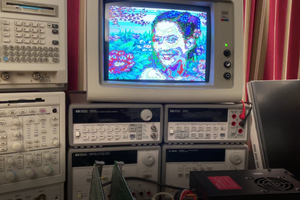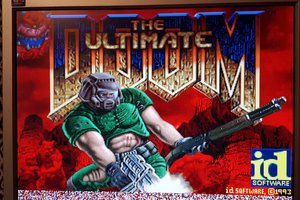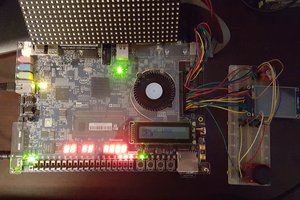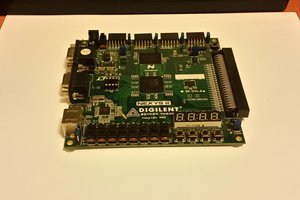The CPU:
The Pentium III CPU I'm using is similar to the one used in the original XBox, but runs at a higher core clock and has twice as much cache, but at a slower 100MHz bus. The Dingo Console will have eventually have an overclock function called After Burners, which effectively sets the core voltage to the maximum 2.1V*, the GPU voltage to 1.1V*, and sets the bus frequency to 120MHz*. To dissipate the extra heat, the fan will overvolt from 5V to 7V*. Since the bus is overclocked, the GPU and RAM are also overclocked. To prevent damage, the system will go back to it's standard speed if either the CPU or GPU hit a preset temperature, by default 85C*.
*Can be changed by the user in the BIOS, at their own risk.
The GPU / NB:
For the graphics, I'm making my own GPU architecture from scratch, and it will be programmed onto an Artix 6 FPGA. It will have 8 cores running at least 400 MHz, maybe more, and each having 256 KB of shader script cache, and the entire device will have a 4 MB texture cache. Unlike other console GPUs where the rendering is fixed, this device will behave more like a PC GPU and run shader scripts of my own language, something similar to GLSL.
The GPU will also dual purpose as the Northbridge. The CPU has to go through the GPU to access the RAM and peripheral devices. The GPU will split the RAM space dynamically, defaulting at 8 MB on startup. Then when the console boots into the game, the RAM split will change to what the game needs. The RAM controller will run at 667MHz.
The FPGA will have a JTAG port so you can reprogram it however you like. But due to the fact that it's attached to just about everything in the system, I highly advise not touching it unless you know exactly what you are doing.
 FloppidyDingo
FloppidyDingo



 Ted Fried
Ted Fried
 Matt Stock
Matt Stock

 Samuel A. Falvo II
Samuel A. Falvo II
Which os? What games? Or are you DIY all of them by yourself?